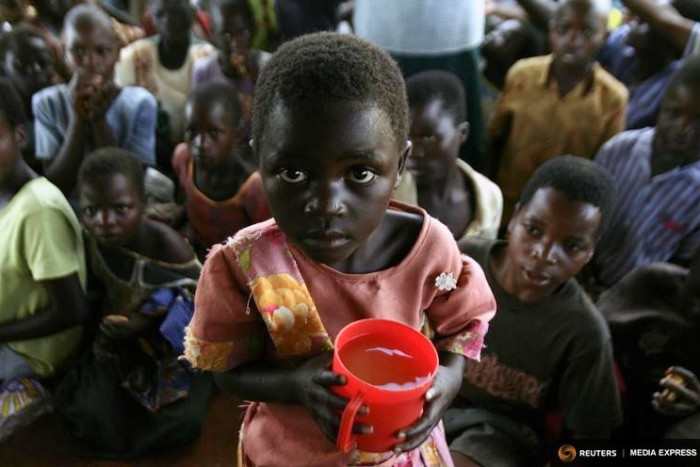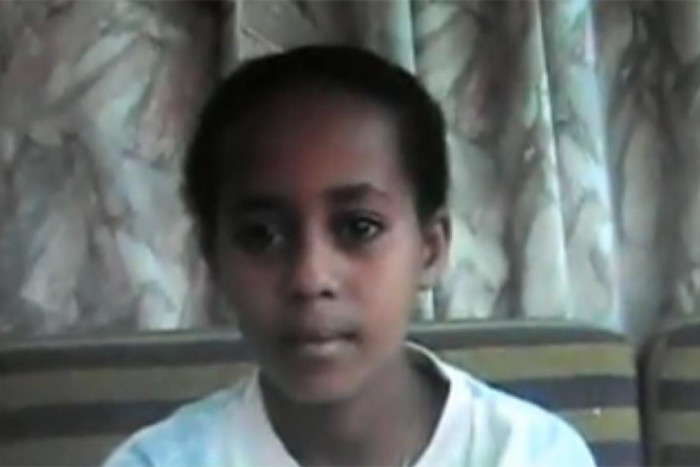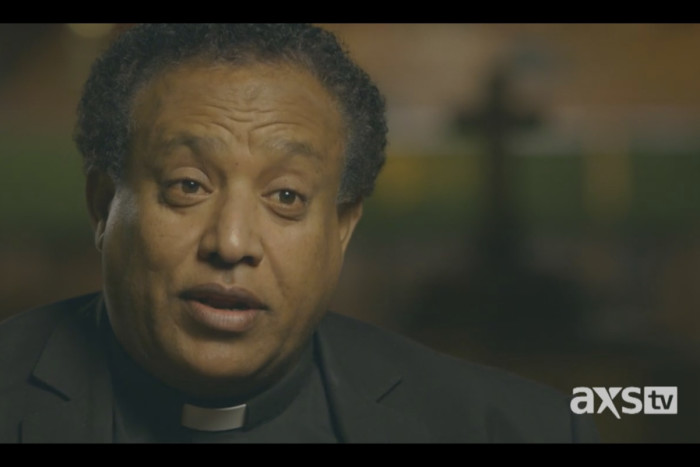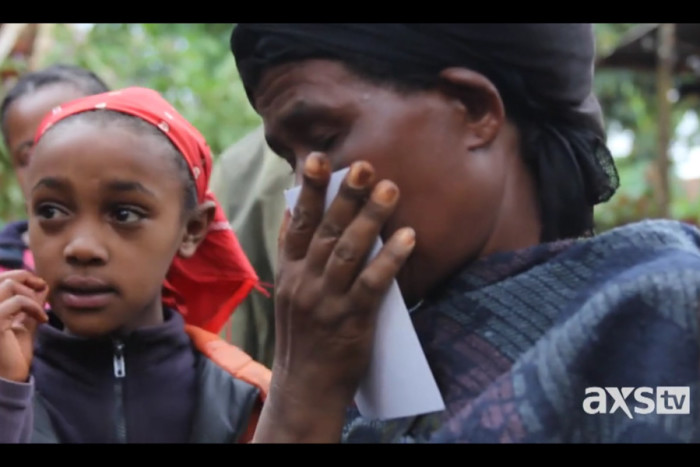
International adoption can be a beautiful thing.
Imagine one of the millions of children orphaned by AIDS finding a loving home with a well-to-do Seattle couple who desperately want to become parents.
But the real picture isn’t always so pretty. Corruption and fraud mean waiting orphans may never get the chance to have a second family. Meanwhile, other children whose parents are still alive, but too poor to care for them, are given up for adoption. And the families they land with here in the U.S. aren’t always the dream parents we might like to imagine, as widely publicized horror stories of abuse have shown.
International adoptions from my home country of Ethiopia have plummeted over the last five years as the government — like many others around the world — has tried to close the door.
Is there still a way to fix a struggling system and keep connecting needy kids with happy homes?
The end of international adoption?
Just a few years ago, international adoptions were booming. A quarter of all adopted children worldwide came from Ethiopia, making it the second biggest sending country, behind China.
But after the number of international adoptions from Ethiopia to the U.S. peaked at 2,511 in 2010, there was a sharp decline to only 716 adoptions in fiscal year 2014.
“Adoption has been harder from Ethiopia in recent years for many reasons, including fraud and corruption,” explained Aselefech Evans, who was adopted to the with her twin sister in 1994, in an email. Evans is a columnist for The Lost Daughters, a collaborative writing project run by women who were adopted as children.
In March 2011 the Ethiopian government announced it would cut down intercountry adoption by as much as 90 percent, increasing scrutiny of orphanages amid allegations of fraud and document falsification in what had become a lucrative “baby business.”
Just a few months later came the horrific case of Hana Alemu Williams, who was starved to death by her fundamentalist Christian adoptive parents in Skagit County. As haunting descriptions circulated of 13-year-old Williams’ naked, beaten body left for hours in a backyard not far from Seattle, the Ethiopian government quietly closed down two dozen orphanages.

An investigation by Slate and the Nation Institute in 2013 found that the Williams case fit a pattern of couples in Washington state assembling huge families of adopted and biological children and raising them in abusive conditions, often on the fringes of society.
Last March, a surprised U.S. Department of State announced on its website that most Ethiopian regional states had effectively banned intercountry adoption, either by refusing to approve most placements, or by banning the common practice of relinquishment (where living parents give up their children).
As a result, some regions have seen an increase in children presented as ‘abandoned’ to orphanages under questionable circumstances. But regardless, the results have been a huge dropoff in adoptions since 2010, expected to fall even farther this year.
Here in Washington state, new adoption agency licensing requirements were enacted last year to implement the recommendation of a 2012 committee report on severe abuse of adopted children, using Hana Williams’ as a prime case study.
But Patrick Dowd, who prepared the report, and is now the director of state’s Office of the Family & Children’s Ombuds, has his doubts about whether the new law would have been enough to prevented Hana’s tragedy.
“There are situations where a family goes through the adoption home study process with flying colors, there are no red flags, there are no concerns and then there’s a tragic result,” he said.
“We can’t intrude on people’s lives”
Berhanu Seyoum, pastor of the Ethiopian Mekane Yesus Church in Seattle, knows this first hand. He’s spent the last few years helping Ethiopian children who went from adoptive homes to living on the streets in the Northwest.
“The problem is always ongoing,” he said. “Adopted children who come here from Ethiopia are kicked out of homes. [Adoptive families] swap them on the Internet. If not, they kick them out of homes by getting them arrested.”
Seyoum has worked with the children of one Everett family, the Hehns, who were featured in the 2014 Dan Rather documentary Unwanted in America. The Hehns have adopted over 30 children, at least nine of which have ended up homeless.

That “swapping on the Internet” Seyoum mentions? It’s what’s called “rehoming” in the adoption industry — a process by which the first adoptive parents pass on their adopted children to another family. One woman told Rather she rehomed her Ethiopian children on Craigslist.
Shockingly, Dowd explains, there’s no regulatory oversight for rehoming, and children can sometimes end up hopping between several adoptive homes, without any legal requirement to notify the original adoption agency.
“There is no court process for that. There is no scrutiny of the new home whether it’s appropriate or not,” he says.
By some estimates between 10 and 25 percent of all adoptions are “disrupted” in some way before they’re legally finalized. A smaller number are “dissolved” after finalization.
But who’s really counting and how?
“That is a problem. We don’t have a system in place to track how many adoptions disrupt or fail or become at risk of disruption,” Dowd explains. “That is something we identified in the report in 2012. A lot of the cases that were reviewed … they came to our attention almost by chance, but there is no kinda statewide registry of all adopted children.”
Counselors are quick to point out that rehoming is one of the most traumatic experiences an already traumatized adopted child could possibly face. So how can it possibly be legal?
Well it turns out that the constitutional rights of adoptive parents often take precedent over the best of interests of an adopted child.
“Most children become American citizens when the enter the United States and as such they are not monitored. It’s like who monitors a biological child,” Susan S. Jacobs, the State Departement’s special advisor for children’s issues told Dan Rather in Unwanted in America. “We can’t intrude on people’s lives.”
Community members like Seyoum often find their hands tied when trying to mediate family problems between adopted children and parents.
“There are many things that could happen within a family. But you can’t help them when they are in the family,” the pastor said, “the law doesn’t allow you to interfere in the family.”
Once an adoption is finalized, the law treats the family like any other, with strict protections for their right to privacy. Perhaps that is fair. But as a result, efforts to avoid abuse have to be focused on home studies and other pre-screenings of adoptive parents (efforts which would become completely moot if a child is then “re-homed”).
Kids need culture and community
Even before the recent restrictions, adopting from Ethiopia wasn’t easy.
“We went through a lot a in our adoption, I mean they learned everything they could possibly know about us,” says Nancy Carroll, a Seattle real estate agent who adopted her two children in 2007. “You have to expose yourself on a very intimate personal and financial level.”
She says she and her husband paid about $30,000 in agency fees and travel expenses for the adoptions, though they eventually recouped most of it through a federal adoption tax credit. Their adoption agreement with the Ethiopian government requires them to file yearly reports that explain how the children are doing academically, socially and behaviorally. Carroll says a social worker did follow-up visits multiple times in the first year they had the kids.
Still, she says she’s concerned that the process is getting even more cumbersome for potential parents, leaving orphaned children in places like Ethiopia wanting for homes.
As restrictions on the Ethiopian side have increased, there seems to have been a major shift in public awareness of the challenges raised by transracial adoptions, whether they’re international or not.
These days the importance of cultural connection is something everyone in the adoption community seems to agree on. And for children adopted internationally, that means maintaining a connection to their birth country.
“I see it as helping their sense of identity,” Carroll says. “Here they are, in our case, adopted by white parents and taken to the other side of the world. My daughter was old enough when she came home to know where she came from. And so initially in the first six months, we had Ethiopian food every night. She went to sleep with injera. She couldn’t sleep with out it. Slowly she became more Americanized, in part because she wanted to blend in school and not be different.”
Adoptees like Evans who have struggled reconnect with the Ethiopian culture as adults are emphatic about adoptive parents’ responsibilities.
“Adoptive parents need to reach out and connect with their children’s community of birth. Ethiopian children deserve to be raised among other people of color, not in isolation,” she said. “They should be raised where there are other Ethiopians, so they can have mentors and role models.”

Fortunately, there are a lot of opportunities for that in the Seattle area.
Ethiopia Alemneh, the director of the Ethiopian Community in Seattle, told me some adoptive families are trying to connect with the community through the organization, studying Amharic and volunteering. The organization has “cultural immersion” programs which attract between 20 and 40 adoptees per week, and some adoptive parents are paying members of the community organization, she said.
According to Alemneh, most of Seattle’s Ethiopian community remains positive about the adoption phenomenon, despite the tragic, high profile incidents. She says she’s happy to have adopted children and their parents involved in the organization.
“Adoption is something that is beneficial,” she says.
Where regulations come up short
Nancy Carroll’s family is just one of probably hundreds of Ethiopian adoption success stories in the Seattle area. Between our large and welcoming Ethiopian community, and plenty of well-resourced, globally-oriented people interested in adopting, in some ways this is the ideal place for Ethiopian children to end up.
But still, the Hana Williams case has left scars.
And despite impressive early steps in response to that tragedy — asking the right questions about tracking and monitoring of rehoming, disruption, and abuse and neglect — somewhere along the way, the Washington state has dropped the ball.
The bill born from Dowd’s report initially met resistance in the State Legislature amid concerns about religious discrimination. The version that did finally pass last year focuses on regulating adoption agencies, requiring that they give prospective parents training to prepare them for the specific challenges of adoptive parenting, and that they do one follow up visit in the first month after placement.
Seven states have outlawed rehoming in different forms, according to a recent Government Accountability Office (GAO) report, and eight others are moving fast to address the issue. But Washington is not one of them.
When I specifically asked Dowd whether or not rehoming is legal in Washington and he struggled to find an answer.
“To my knowledge, there is not a process in place that would require adoptive parent to notify the state government prior to obtaining an alternative living arrangement for an adopted child,” he finally said.
Adoption agencies have been elusive to track down for this story, but Dowd says their contracts with their clients often require notification of rehoming to the adoption agencies. Still, he admits that without any legal enforcement, they might not always honor that requirement.
“I think it’s unfortunate to make adoption of children more difficult as a whole because of some very tragic and sad incidents that are relatively few in number.”
So is there any hope for Washington to build on the spirit of the 2012 report to better monitor international adoptions and cut down on dissolution and rehoming? That’s the million dollar question.
One approach would to better prepare adoptive parents. Federal law only requires agencies to provide ten hours of pre-adoption training to their clients, and the new state law didn’t expand that.
Potential parents could be more aggressively screened with pre-adoption home-studies. But Larry and Carri Williams apparently went through a home study, and it wasn’t enough to save Hana from their abuse.
It’s unclear whether there’s any political will to fight for expanded post-adoption monitoring, or whether it could hold up to constitutional challenges. Carroll says she’s welcome to the idea if it means more support through what she acknowledges is a challenging experience for both adoptive parents and children.
Protecting the most vulnerable
All adoptions are challenging — but international adoptees are especially vulnerable. They’ve been removed from their communities of birth, and the traditional safety nets of culture and kin that are the last line of defense from abuse for biological children.
Once they’re placed with adoptive parents, it’s too easy for them to end up living in darkness.
Without mandatory monitoring of adoptive families, we don’t know how many of these children get rehomed. We don’t know how many of these children are neglected and abused, unless its discovered “almost by accident,” as Dowd put it.
Until this darkness is cleared, we’ll probably keep seeing moves toward all-or-nothing regulation on the part of sending countries like Ethiopia. The results will be unfair to both prospective adoptive parents here, and to the millions of orphaned children that desperately need a home.
“I think it’s unfortunate to make adoption of children more difficult as a whole because of some very tragic and sad incidents that are relatively few in number,” Carroll says. “At the same time I respect the Ethiopian government wanting to protect their children.”


Requiring more education for adoptive parents risks exposing their children to a very popular, brutal, fringe practice in the USA called “Attachment Therapy” and its highly abusive parenting (aka Nancy Thomas parenting). This was evident in nearly half of the re-homed children in the Reuter’s investigation. For more info: http://www.childrenintherapy.org
I also recommend Kathryn Joyce’s book on international adoption called “The Child Catchers.”
We need to change the paradigm which sees a reduction of the flow of children to fill a demand as a problem. Children are not commodities.
We can feed them their cultural food; we can have them interact with others from their culture…but isn’t all of that just a substitute?
The real solution is allowing Ethiopia and the ranting (such as Russia and Guatemala who have also closed the doors to international adoption because of corruption and abuses) to find ways to increase domestic adoptions and improve conditions for the children not adopted.
That is each country’s responsibility! Our responsibility is first to our own children in state care, of which there are more than 100,000.
The “worry” about orphans in other nations is disingenuous until we find homes for our own children.
In reply to LindaRosenRN’s comment, GOOD education would not include such radical and controversial solutions. the real problem is with all adoption (except those from foster care) privatized and virtually no government regulations or oversight, who will enforce any education requirements?
Until we remove the money from adoption, all children in need are at risk.
Mirah Riben, author, THE STORK MRKET: America’s Multi-Billion Dollar Unregulated Adoption Industry
Thank you, Goorish Wibneh for consolidating many of the problems with IA in one place. I also want to compliment you on the use of the term “second parents” as opposed to the ironic “forever families.” Second parents reflects the reality that every adopted child (even domestically adopted newborns) come into their adoptive families with an existing family. That is the first reality that anyone adopting needs to accept.
I am very troubled however by far too many in the field of adoption using the “bad apple” argument and downplaying the problems as exceptions even anomalies, as is expressed in the conclusion of this piece: “…it’s unfortunate to make adoption of children more difficult as a whole because of some very tragic and sad incidents that are relatively few in number.”
1. One abused or rejected child is too much, and
2. We need to stop putting the needs of the wanna-be parents before those of the children, which is inherent in the view of making the adoption process more difficult “unfortunate.” Every child deserves no less than the most careful screening, vetting g and educational process for parents to be entreated with their care.
Thank you, LindaRosaRN and Mirah Riben for your valuable comments.
LindaRosaRN, I am not entirely clear how pre-adoption education for prospective adoptive parents leads to the risk of “attachment parenting”. However, I find the obsession with pre-adoption process, including the arduous process of prospective adoptive screening, optimistically too deterministic. It didn’t help anyway from what I gather. But also 1) It’s probably discriminatory in selecting parents who can adopt(based on income or class for example). 2) It’s the very reason for creation of the “adoption industry.”
Mirah Riben, I don’t necessarily agree with your nativist paradigm -that we shouldn’t “worry” about “other” nations children- for obvious reasons. But perhaps it suffices to say(without disagreeing with the nativist paradigm) that it’s possible some American prospective parents want to have a choice to adopt from other nations. It also helps American adoption “businesses”.
I entirely agree with “One abused or rejected child is too much”. And that is why a reform is needed. It would have been fair if you included the entire quote of what Carrol said -that it’s justified the Ethiopian government is discouraging international adoption.
Miran Riben, it goes without saying that children are not commodities as the term is used in “demand and supply.” I am not sure where in the article gave you that impression otherwise. If I’ve to guess either you have conflated “need” with “demand” or you are all too familiar with the de facto adoption “industry” the treats children as commodities. If that latter, I pose a question to you: you seem to believe making adoption process more difficult is not “unfortunate” but also you want money out of adoption, which seems impractical because the money is mostly spent in that process. How do you, in your expert opinion, suggest to get money out of adoption while making adoption process more difficult? I am also suspicious of using the words “careful screening” or “good education” as if there is a universal agreement on what is “good” and “careful”.
This article completely leaves out any detail on the PAIR process which is now mandatory for non-Hague countries like Ethiopia (http://www.uscis.gov/news/alerts/ethiopia-will-implement-pre-adoption-immigration-review-pair-requirement) that went into effect in 2013. The reason adoptions have gone down is directly related to this and has helped reduce fraud hugely in these countries. Yes, it takes longer to be matched with a child, but it’s because now you no longer adopt the kiddo in advance – you get preapproved to adopt by the US government, accept the referral of a child that the adoption agency has made, THEN they do a full investigation into that particular child to ensure the child is legally an adoptable orphan. This is what prevents “baby selling” to occur where predatorial folks go to families promising to give the child an education in America and the parent doesn’t realize they’re actually being put up for adoption. As adoptive parents ourselves, we are so grateful for this process that is now in place, and only hope that Ethiopia and other non-Hague countries will join the Hague Adoption Convention.
FYI – in addition, Ethiopia has become more popular in recent years because China has closed its doors to most adoptions that are not special needs. It is an ever-evolving world. If the US would not make domestic adoption so damn awful (it’s the same price if not MORE expensive than international – we found it would be $33K to adopt in the US, $18K from Ethiopia), we’d be in a whole lot better place here. DHS foster/adopt programs are also a bureaucratic nightmare as well – after seeing how they put kids up like it’s a lottery when they become legally adoptable, even if you’ve fostered your kid for 5 years you could very well lose your child because they think ANY family member is better than non-genetically related people who’ve been true parents to the child. It’s messed up.
In response to this idea of kids being sold in a “human trafficking” situation… It seems unlikely that families would spend tens of thousands of dollars to “purchase” a child to abuse. Fundamentally and ideally, children should be raised in their own culture and cared for by loving, extended family members. But this is of yet not a possibility.
We are also an adoptive family of several international children. It has to be put bluntly that many of these children are true orphans and if they were not able to be adopted by loving families (most of the time, indeed!) would grow up in a children’s home. This is reality. They are not commodities sold, but children given a chance at a life nearing “normalcy”. Similarly, countries like Ethiopia have yet to be able to care for their orphans and give them a family life.
That is the reality.